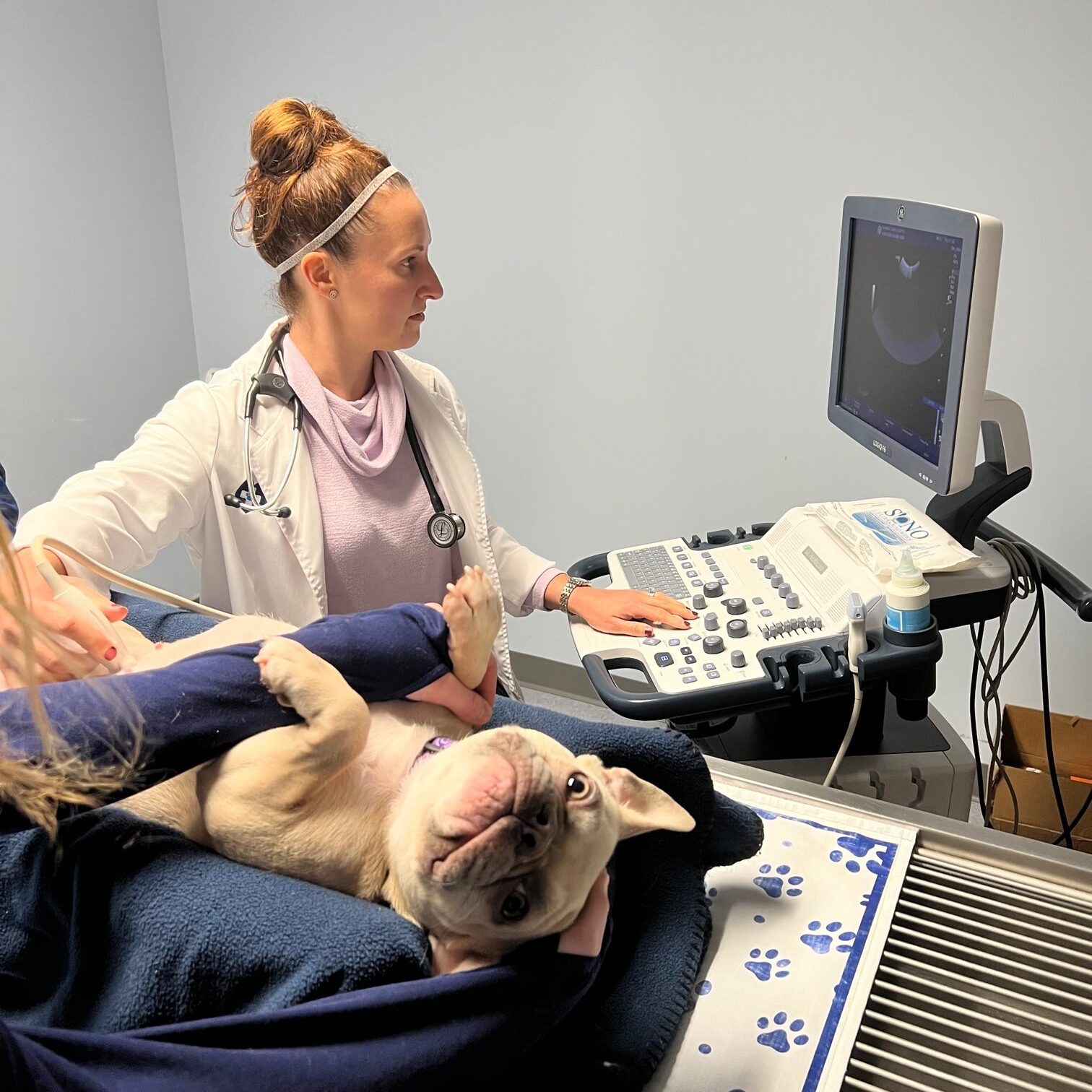
How Ultrasound Works
Cat and dog ultrasound procedures are non-invasive, drug-free, and virtually painless. The machine emits short pulses of sound to create echoes, which are converted into electrical impulses by the ultrasound machine’s computer system. The electrical impulses are then recorded and translated into a moving, real-time image of the internal organs. Unlike X-rays, sound wave echoes can create a clearer, more detailed picture of the soft tissues. We can study the shape and texture of the organs, and evaluate their blood supply.
Digital X-ray
Ultrasound is a highly useful tool in our practice, but we also offer digital radiography, which is another valuable diagnostic tool that we can use in conjunction with ultrasound. Digital X-ray allows us to produce higher-quality images of your pet’s bones and internal organs. Digital X-rays result in shorter radiation exposure times and higher efficiency than their film predecessors. With X-rays, we can look for bone fractures, tumors, foreign bodies, and other issues with this technology.


